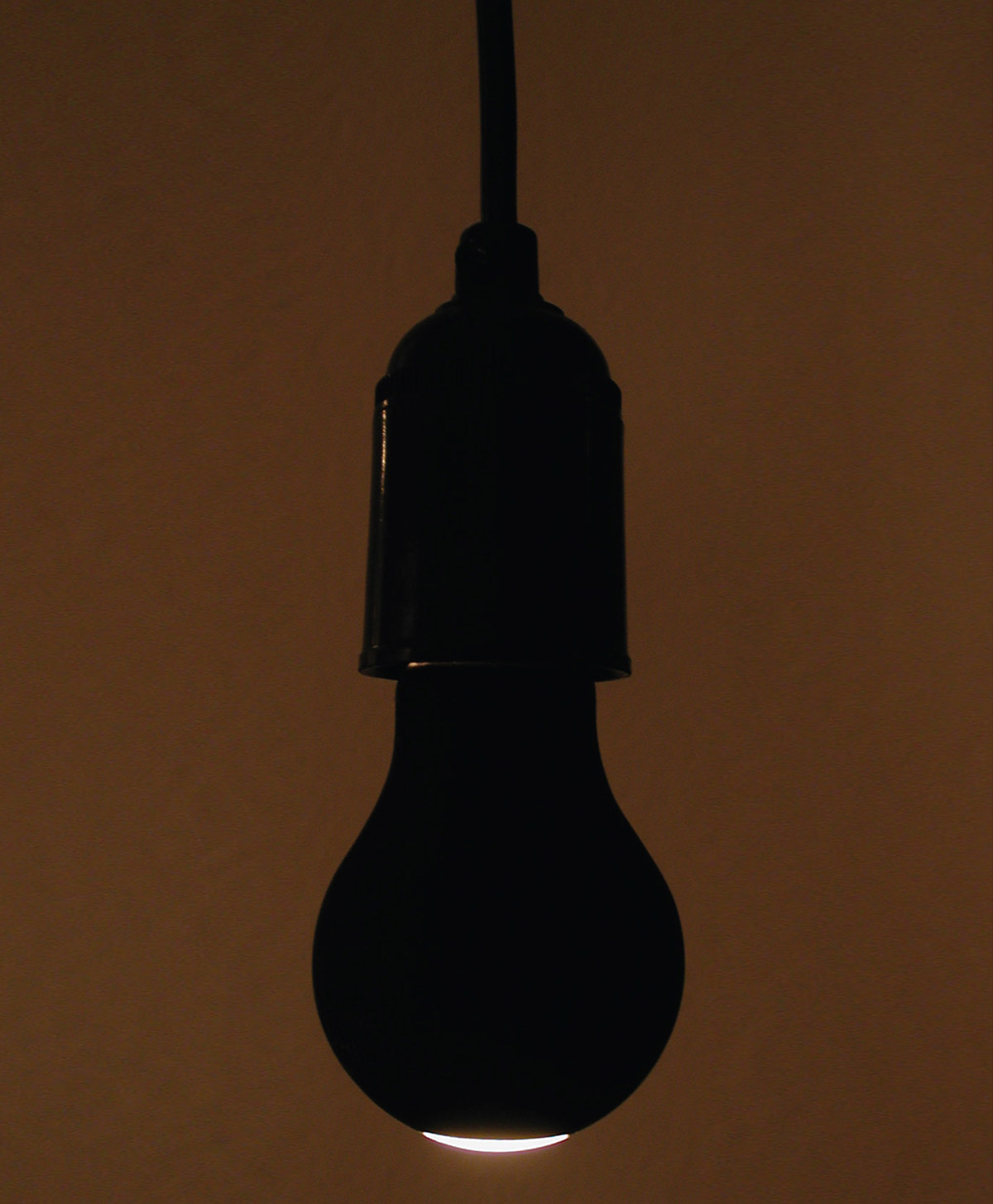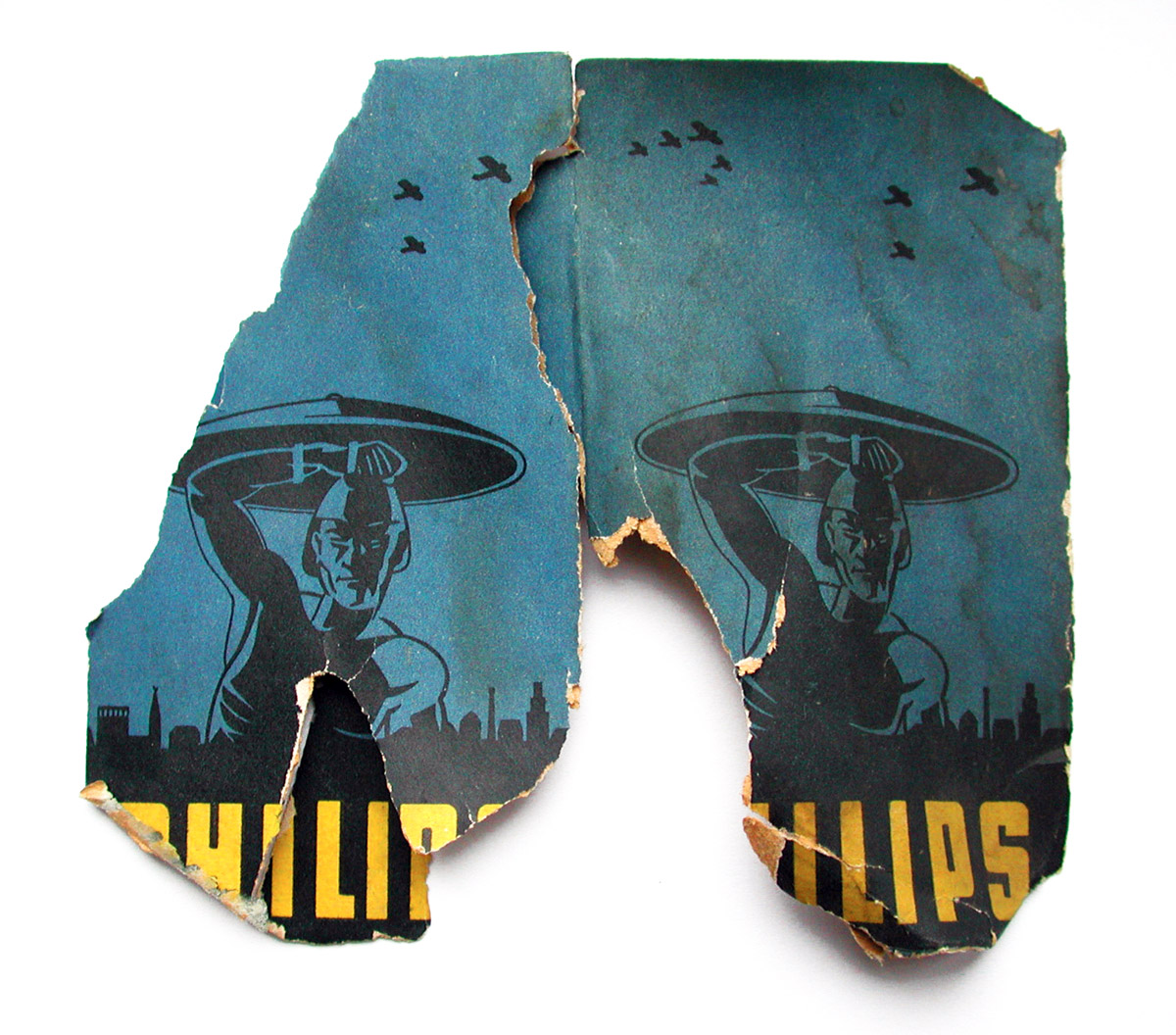Night Lights
Eindhoven in the shadows of the Protector Lamp
Mats Bigert
On the night of 21 February 1938, a visitor entering the city of Eindhoven, Holland, would have been surprised to find himself in a total blackout. The houses, streets, and factories of the Dutch city were all obscured, and at a first glance it would have seemed as if someone had pulled the plug on the entire city. After a while, though, the visitor’s eyes would have slowly adjusted to the scene and started to discern a vague ambient light, like the dimmest version of a solar eclipse.
Equally puzzled by something that did not seem to make any sense, I was standing in a thrift shop holding in my hand a fragile object that seemed unlikely to have made it that far into the future. A light bulb, I concluded, but why black? I had seen modern UV bulbs with deep purple glass, but this one was matte black. Only one small sandblasted white circle on the tip of the bulb hinted there would be any light coming out of the thing. The owner smiled when he saw me zero in on the thing and handed over the bulb’s tattered box to help ease my bewilderment.


Philips Luftschütz Lampe. On each side of the box was an image of a man coming up from a sewer wearing a helmet; above him, a dark blue sky swarmed with ominous black planes. Our visitor to Eindhoven would also have seen aircraft flying over the city back and forth at different altitudes, observing the test from above like a group of uneasy birds. But the biggest difference from the image on the box would have been that the city residents were moving at street level instead of like rats in the sewer. On this night, Philips’s new product, the “Protector Lamp,” was being tested on a massive scale around Eindhoven.
The city had grown dramatically around the industry that Gerard Philips had established there in 1891. After coming back from the US, where he had studied Thomas Edison’s experiments at Menlo Park, Gerard managed to talk his father into supporting a start-up light bulb company of his own. His brother, Anton Philips, joined the company in 1895 and success came rapidly, in large part thanks to the spirit embodied in their slogan: “To produce more than the others can sell, and to sell more than the others can produce.” During World War I, Philips developed both the X-ray tube and the radio tube, and the company remained one of the world’s leading manufacturers in its field well into the 1930s.
That is probably why Philips managed to convince the citizens of Eindhoven to replace every light bulb in the city with the new Protector Lamp for that one cold February night. The inspector in charge of defending the citizens against air raids, Lieutenant General P. H. A. De Ridder, concluded that “The Protector Lamp performed well during the test, in the factories as well as in the people’s houses. No rays of light were visible, even though the curtains were not drawn.”[1]
The Philips archives do not indicate when and why the company decided to produce the lamp. Maybe the German bombing of Guernica in 1937 triggered the idea. American reporter George Steer’s ominous reports of the attack in the New York Times had signaled to many what would happen to the rest of Europe just two years later. The final paragraph of an ad for the bulb in 1938 suggested the marketing potential in such a future: “If the worst were to arrive, it remains questionable whether we will be able to deliver enough bulbs from our overstock. Peacetime orders are therefore recommended: DON’T WAIT, ORDER NOW!”
Two years later, on 10 May 1940, Germany invaded Holland and the Philips management escaped to England. The Germans took over the Philips industries, focusing production on tubes to be used in military communications. On 30 March and again on 6 December 1942, the British heavily bombed Eindhoven in order to prevent the production of radio tubes. Ironically, the Protector Lamp did not help the German occupiers; Eindhoven was bombed in broad daylight.
Thanks to Onno Heijdens for translation assistance.
- Philips leaflet, June 1938.
Mats Bigert is one half of the artist duo Bigert & Bergström, based in Stockholm. He is also an editor-at-large at Cabinet.